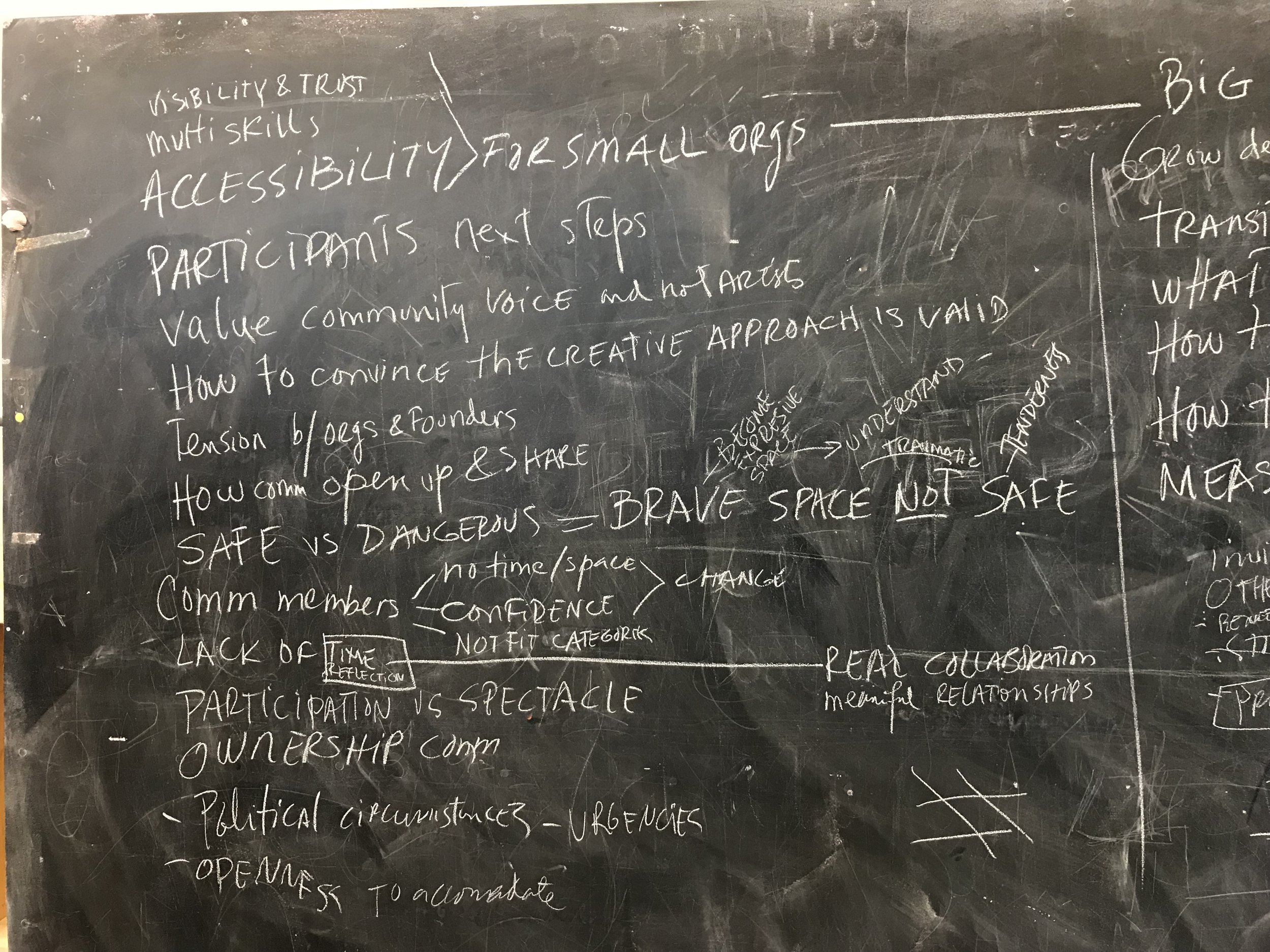
Research forms such a large part of what I do and since completing my PhD at University of Brighton, I have continued as an independent researcher. I bring research into my daily work, whether that be creating Tate Exchange as a Tate Research Centre, partnering with universities as Principle or Co Investigator, supervising PhDs, or convening books and writing papers.
Trauma-Informed Placemaking
Place has been seen as ranging from contested to convivial in normative discourse, but wherever placed on that spectrum, the inherent trauma of place is not widely acknowledged. Dr Anita McKeown and myself have initiated a research-as-publication project on what we are terming trauma-informed placemaking.
Routledge Handbook of Placemaking
Placemaking has seen a paradigmatic shift in urban design, planning, and policy to engage the community voice. The Handbook is the first to explore placemaking in such a comprehensive and curated way, examining placemaking’s development, its emerging theories, and its future directions, offering theoretical and practical insights from the leading scholars and practitioners in the field.
Creative Placemaking: Research, Theory & Practice
The book presents grassroots to top-down practices and socially engaged, situated artistic practices and artsled spatial inquiry that go beyond instrumentalising the arts for development, bringing together a range of scholars to critique and deconstruct the notion of creative placemaking, presenting diverse case studies from researcher, practitioner, funder and policymaker perspectives from across the globe.
PhD: Making Places
My thesis ‘Making places: performative arts practices in the city’ resulted from a research project focused on a practice of placemaking informed by performative and social practice artforms. The research was concerned with grassroots arts-led interventions in the urban realm, participated in by citizens and with an aim to improve the urban lived experience and to form and cultivate connections between people, place and community. This I came to term ‘social practice placemaking’, a type of placemaking that is community-led/participative, informed by social arts practice and has an attention on these arts as a means of urban revitalization.
Psychology of Kindness and Wellbeing at Work PG Cert
A matter I am passionate about and I am going back to study so I can get deeper into the subject - starting at University of Sussex, October 2022. The course looks at how to create better working environments and relationships and how to deliver change in work cultures to promote kindness and that enable people to flourish, evaluating the different approaches of kindness and wellbeing from an interdisciplinary and contemporary perspective.
Museum as Relational Object
Is the museum a relational object through which we can understand our lived experience?
This is a question I found myself asking when in museum social practice spaces. In these spaces I saw the artwork create a social, critical, environment. In my own creative placemaking research, I saw the objects co-created by socially engaged artists working with situated community participants take on this relational role. In one instance, the making of go-karts with children and elders, the art object, i.e., the go-kart, became the ‘relational object’, a means through which to talk of place issues of the past, present, and future. I propose that the museum can be this same catalyst, creating a liminal social environment that can help us navigate our world.
I saw the same at Tate Exchange, and, by extension, in the programmes of Tate’s creative learning pedagogy, as well as in the wider museum education practices globally. Artists and participants at Tate Exchange used the art object - whether this was something from the Tate collection, or something created through a material or social encounter - as a means to talk through the matters of our contemporary lived experience.
What this then led me to is seeing the museum as that relational object made large: a space for the depth and breadth of arts-led, co-produced, and participative knowledge creation with the public, which helps manifest a step-change in transforming such institutions relationship with the public, the civic, and itself – and will continue to do so, as a generative and iterative agent. Thus, as relational object, the museum manifests itself as a civic space of plural and diverse knowledges. It becomes a cluster for and of artistic practices and learning pedagogies that, via convivial modes of social exchange with the public, is concerned with human interactions and collective meaning making.
I have presented widely on this topic at conference and more on Tate Exchange practice can be found in Tate Papers no.34, 2021–22.
Community of Practice
Succinctly, a community of practice is a group of people who ‘share a concern or passion for something they do and learn how to do it as they interact regularly’ (Wenger, 2006, p. 1.). I had the honour of seeing this firsthand at Tate Exchange and over four years took a loose cohort of organisations through to network and then to community of practice. It is what has happened with Academic Archers, and it informs my ecoystem approach to my culture, place and Change Agent work.
